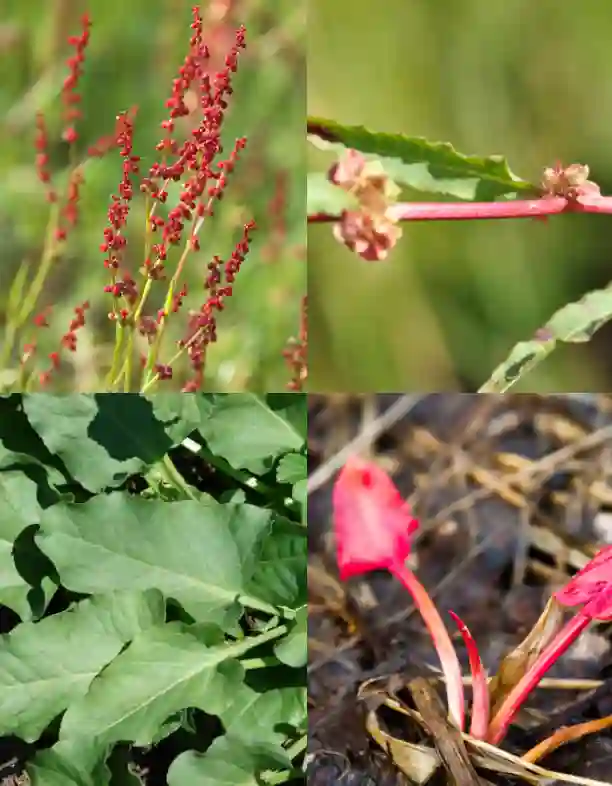
My Fascination with Nepenthes gracilis
As an avid plant enthusiast, I’ve always been captivated by the unique beauty and complexity of carnivorous plants. Among them, the Nepenthes gracilis holds a special place in my heart. This slender, elegant plant, with its delicate pitchers and intricate trapping mechanism, never ceases to amaze me. Today, I want to share my experiences and insights about this fascinating species.
Plant Family: Nepenthaceae – 207 Species in Genus Nepenthes
What is Nepenthes gracilis?
Nepenthes gracilis, commonly known as the Slender Pitcher Plant, is a tropical carnivorous plant native to Southeast Asia. It thrives in humid, lowland forests and often grows in swampy areas. The plant is characterized by its thin, elongated pitchers that hang gracefully from the ends of its leaves. These pitchers serve as traps for insects, which the plant digests to obtain essential nutrients.
How does Nepenthes gracilis trap insects?
The trapping mechanism of Nepenthes gracilis is a marvel of natural engineering. The pitchers exude a sweet nectar that attracts insects. Once an insect lands on the slippery rim of the pitcher, it falls into the fluid-filled chamber below. The interior of the pitcher is lined with downward-facing hairs that prevent the insect from escaping. Eventually, the insect drowns in the fluid, and digestive enzymes break it down, allowing the plant to absorb its nutrients.
How to care for Nepenthes gracilis?
Caring for Nepenthes gracilis requires attention to its natural habitat conditions. Here are some essential tips:
- Light: Provide bright, indirect sunlight. Too much direct sun can scorch the leaves, while too little can stunt growth.
- Water: Keep the soil consistently moist but not waterlogged. Use distilled or rainwater, as tap water may contain minerals that can harm the plant.
- Humidity: Maintain high humidity levels, ideally above 60%. You can use a humidity tray or mist the plant regularly.
- Temperature: Nepenthes gracilis thrives in warm temperatures between 75-85°F (24-29°C) during the day and slightly cooler at night.
- Feeding: While the plant can catch its own prey, you can supplement its diet with small insects like ants or fruit flies if grown indoors.
How to propagate Nepenthes gracilis?
Propagating Nepenthes gracilis can be done through several methods, including stem cuttings and seed germination. The most common and effective method is through stem cuttings:
- Cutting: Choose a healthy vine and cut a section with at least two nodes.
- Rooting Hormone: Dip the cut end in rooting hormone to encourage root growth.
- Planting: Place the cutting in a well-draining mix of sphagnum moss and perlite. Keep it in a humid environment, such as a propagation dome, until roots develop.
Will the Nepenthes gracilis flower die if touched?
One common question I get is whether touching the flowers of Nepenthes gracilis can cause them to die. The simple answer is no. While the flowers are delicate, touching them gently does not harm them. However, it’s best to avoid excessive handling, as the plant can be sensitive to environmental changes and stress.
What pests and diseases affect Nepenthes gracilis?
Like any plant, Nepenthes gracilis is susceptible to certain pests and diseases. Common pests include aphids, mealybugs, and spider mites. These can be controlled with insecticidal soap or neem oil. Fungal infections, often caused by high humidity and poor air circulation, can be treated with fungicides and by improving ventilation around the plant.
What to plant with Nepenthes gracilis?
Nepenthes gracilis can be grown alongside other carnivorous plants that share similar habitat requirements, such as Drosera (sundews) and Sarracenia (pitcher plants). These companions create a diverse and visually appealing carnivorous garden. Additionally, non-carnivorous plants that thrive in high humidity and indirect light, such as ferns and orchids, can complement Nepenthes gracilis beautifully.
Why I love Nepenthes gracilis?
Nepenthes gracilis embodies the wonders of nature’s ingenuity. Its ability to lure, trap, and digest insects is both fascinating and educational. Growing this plant has deepened my appreciation for the delicate balance of ecosystems and the incredible adaptations of carnivorous plants. Every new pitcher, every tiny insect caught, adds to the ongoing story of life and survival in my little corner of the world.
In conclusion, Nepenthes gracilis is not just a plant but a living, breathing marvel that offers endless fascination and learning. Whether you’re an experienced horticulturist or a curious beginner, I highly recommend inviting this extraordinary plant into your collection.
If i die, water my plants!



